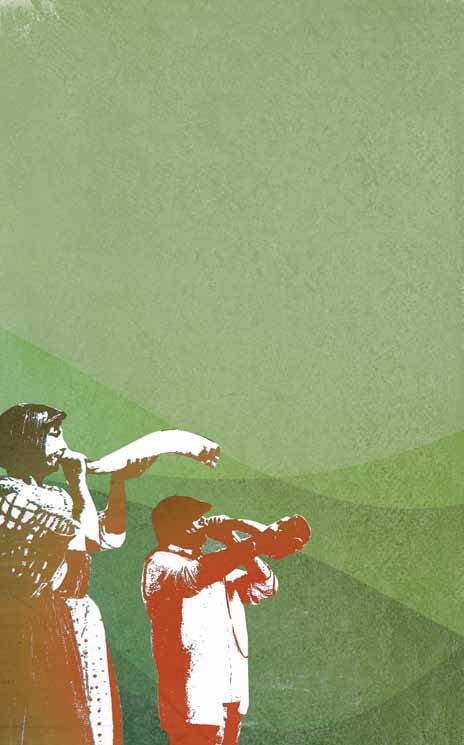In the movie adaptation of JRR Tolkien’s The Lord of the Rings: The Return of the King, there is a scene in which the city of Gondor is being attacked and, to summon help, the so-called warning beacons of Gondor are lit. These are a series of outposts scattered across mountain peaks that are set ablaze, the fires signaling that Gondor needs help. It is a pretty cool scene, as the fires alight in turn, sending the distress call over vast distances. It turns out that, in Bizkaia, there was a real system of fires and horns on five mountain peaks to announce to the people that the General Assembly was going to meet.

- Since the Middle Ages, to announce the General Assemblies of the Lordship of Bizkaia (Bizkaiko Jaurerriko Batzar Nagusietara) held in the Gernika Assembly House, bonfires were lit and horns sounded from five of the prominent peaks of the province. These deiadar-mendiak or montes bocineros are Kolitza, Ganekogorta, Gorbeia, Oiz and Sollube.
- Kolitza, with a height of 883 meters (2896 feet), represents the region of Las Encartaciones or Enkarterri. Kolitza is famous for being the home of the Hermitage of San Roque and San Sebastián, first mentioned in 1111, though the current building was built in the 13th century.
- The mountain closest to Bilbao, Ganekogorta stands at 999 meters (3277 feet). This mountain saw the birth of Basque mountaineering. The first mountaineers of Bizkaia, who founded a group in 1870, were known as ganekogortos. On September 30, 1914, Ganekogorta also saw the beginning of a unique challenge in which a group of climbers committed to climbing 15 peaks in 15 months.
- Gorbeia is the highest of the five peaks, reaching 1482 meters or 4862 feet. In 1899, Pope Leo XIII called for crosses to be erected on the highest peaks in Christendom. A cross was raised on the peak of Gorbeia in 1901, but within a month of its inauguration, it fell. A second cross was built in 1903, but winds knocked it down in 1906. A third cross, shorter in design, was built in 1907. Its base straddles the border between Bizkaia and Araba.
- Oiz stands at 1026 meters (3366 feet). The north slope of Oiz is home to the Monastery of Zenarruza. Oiz was also believed to be one of the homes of Mari, the Earth-goddess of Basque mythology. It was said that she moved every seven years between Oiz and Anboto and whichever place she called home enjoyed better weather and harvests. Oiz was also the scene of tragedy when, in 1985, a flight from Madrid to Bilbao hit an antenna on top of the mountain and crashed, killing all on board.
- The last, and the shortest, of the deiadar mountains is Sollube, reaching only 684 meters (2244 feet). Sollube was the scene of a major battle in the Spanish Civil War. The Battle of Sollube, in May of 1937, lasted ten days and resulted in more than 1000 deaths.
- Since 2004, the 25th anniversary of the reformation of the General Assembly of Bizkaia, the mountains have again come alive. Every year, on May 8, celebrations revive this tradition. Groups have also created foot races between the peaks – the Bocineros/Deiadar Xtreme – to mark the importance of these mountains to the traditions of the province. The longest race, which touches each of the five peaks, is 200 km – 124 miles – and lasts 56 hours.
Primary sources: Montes Bocineros (Wikipedia); Deiadar-mendi (Wikipedia)


